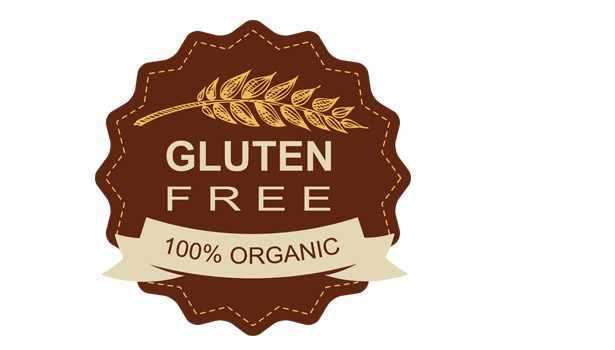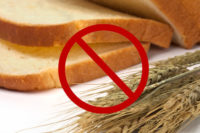As demand for gluten-free products continues to increase, more manufacturers are entering this niche market, developing a wide range of products in various categories. It’s essential that product manufacturers and marketers understand how to safely produce, label and market gluten-free products so that consumers can shop with confidence when purchasing these items. This is especially important for individuals who must follow a strict gluten-free diet out of medical necessity, such as people with celiac disease, an autoimmune disorder affecting 1-2% of the population, as well as those with nonceliac gluten sensitivity.
Gluten-free and allergen labeling regulations in the U.S. really began in 2004, when the Food Allergen Labeling and Consumer Protection Act (FALCPA) was passed by Congress. This amendment to the Federal Food, Drug, and Cosmetic Act requires that any protein from the eight major food allergens (milk, eggs, soybeans, fish, crustacean shellfish, trees, peanuts and wheat) be declared on the label of all Food and Drug Administration (FDA)-regulated foods. The common name of these priority allergens must be listed in the ingredient list or in the “Contains” statement at the end of the ingredient list.
The FALCPA also mandated the FDA to issue a voluntary gluten-free rule by August 2008, but it was not finalized until August 2013. The gluten-free rule prohibits the use of wheat, rye and barley in foods labeled gluten-free.
In Canada, the gluten-free regulation, B.24.018, was passed in 1995 (with further revisions made in 2011). This regulation allows Canadian manufacturers to voluntarily make a gluten-free claim on specially-formulated or processed foods. These products cannot contain gluten protein, modified gluten protein or protein fractions from the grains wheat, rye, barley and oats.
In 2011, Health Canada also made changes to the food and drug regulations to enhance the labeling requirements for specific priority allergens, gluten sources and added sulphites. Prepackaged foods now must declare on the label when they include protein, modified protein or protein fractions from the following foods: Milk; eggs; soybeans; wheat and triticale [a hybrid grain produced by crossing wheat and rye, grown as a fodder crop]; crustaceans; shellfish; fish; mustard seeds; peanuts; and tree nuts. Sulphites and gluten sources also must be declared. The common name of the allergens and gluten sources, as well as the word “sulphites,” must be included in the ingredients list or in the “Contains” statement at the end of prepackaged foods’ ingredients list.
As to U.S. and Canadian gluten-free regulations, unlike mandatory allergen-labeling regulations for foods, the gluten-free regulations so far are voluntary. If a company chooses to make a gluten-free claim, it must meet specific criteria.
Comparisons by country
Although both countries share similar requirements, there are some unique differences. For instance, in the U.S., prohibited grains include any species of wheat (wheat, durum, spelt, kamut, einkorn, emmer and faro), as well as triticale, rye and barley. Canada has the same list of prohibited grains, but also restricts oats from being labeled “gluten-free.” Oats don’t contain gluten, but are frequently cross-contaminated with gluten-containing grains that can occur in fields and during harvest, transportation, storage and processing.
Fortunately, pure, uncontaminated oats have been available in North America for a number of years. In the U.S., they can be labeled gluten-free, but in Canada, they can only be labeled free of wheat, rye and barley. The Canadian Celiac Association recommended to Health Canada to permit a gluten-free claim for pure, uncontaminated oats and products containing these oats, provided that manufacturers undertake rigorous steps to prevent cross contamination and regularly test for gluten. Health Canada is currently reviewing the labeling of pure, uncontaminated oats.
Also, the U.S. allows foods that are inherently gluten-free (bottled water, carrots and 100% fruit juice) to make a gluten-free claim. In Canada, foods must be specially formulated or processed to bear a gluten-free claim. Gluten-free breads, pastas, cereals, muffins and crackers are a few examples that fall into this category.
The terminology to denote whether a product is gluten-free also varies. Canada only allows the term “gluten-free,” whereas the U.S. has four different options: “Gluten-free;” “no gluten;” “free of gluten;” or “without gluten.” But if a company uses the terms “made with no gluten-containing ingredients” or “not made with gluten-containing ingredients,” they are not required to comply with the gluten-free labeling regulations. American consumers, dietitians and other health professionals find this very confusing and would prefer manufacturers just use the term “gluten-free.”
Canada’s gluten-free regulation doesn’t specify a gluten threshold level, although Health Canada considers that gluten-free products not exceeding 20 ppm (parts per million) as a result of cross contamination would meet the health and safety intent of B.24.018. The FDA gluten-free rule does state a specific threshold level of less than 20 ppm. The gluten threshold level of 20 ppm is equivalent to 2 mg. of gluten in 100 g. of food. Research has shown that the 20 ppm threshold level is safe for most people with celiac disease, although tolerances do vary, and some may react to as little as 10 mg. of gluten per day.
Gluten testing of ingredients or finished products isn’t mandated in the regulations. However, companies must ensure that products with a gluten-free claim meet the specific labeling requirements in each country. To meet the regulations, companies can use various quality controls, such as testing ingredients and finished products, requesting certificates of gluten analysis from ingredient suppliers, developing excellent Health Analysis Critical Control Point (HACCP) programs and/or becoming certified by a third-party, gluten-free certification program. Also, it’s important to use scientifically validated methods for gluten testing in a variety of food matrices such as the R5 ELISA Mendez Method.
Learn more about gluten-free labeling regulations at the following links:
U.S.
www.federalregister.gov/articles/2013/08/05/2013-18813/food-labeling-gluten-free-labeling-of-foods
www.fda.gov/Food/GuidanceRegulation/GuidanceDocumentsRegulatoryInformation/Allergens/ucm362880.htm
www.fda.gov/Food/GuidanceRegulation/GuidanceDocumentsRegulatoryInformation/ucm402549.htm
Canada
www.hc-sc.gc.ca/fn-an/securit/allerg/cel-coe/gluten-position-eng.php
www.hc-sc.gc.ca/fn-an/securit/allerg/cel-coe/oats_cd-avoine-eng.php




